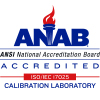 Posted on
Posted on

Monitoring safety and quality is an important aspect of any business, especially in the food industry. With technology ever changing, the ability to maintain quality is constantly improving, but that doesn’t mean there aren’t still issues.
In an effort to ensure public safety, the Food and Drug Administration (FDA) enacted a law which requires all processed food to have an expiration date. When grocery shopping, you may have noticed that different brands often have different expiration dates. This is because each company controls how they test the shelf life of their product, and the temperature and humidity levels within the manufacturing plants can significantly alter the rate at which food begins to deteriorate.
How Are Expiration Dates Determined?
The FDA does not provide a set of strict guidelines companies must adhere to when testing for expiration dates. While companies often differ in exactly how testing is conducted, they all use various forms of technology to determine the rate at which the quality and safety of food begins to deteriorate.
Testing the shelf life of each product can be costly for companies and significantly delay getting food onto the shelves. To avoid a lengthy testing process, many companies perform accelerated tests which involve monitoring the quality of the food in manipulated environments. To do this, temperatures are raised causing food to begin decomposing at a faster rate. Once the food has reached an unsafe level, the data is collected, and an algorithm is used to determine the shelf life of the product at a normal temperature.
What is the Problem?
Temperature and humidity play a crucial role in the quality and safety of food. Higher temperatures and increased humidity can promote the growth of bacteria and impact the rate at which degradation occurs.
When an environment is manipulated or altered to test food, it is imperative that the temperature and humidity levels are closely monitored. Failure to do so may result in inaccurate data which will ultimately lead to skewed expiration dates. This may cause people to throw away perfectly good food or expose them to a detrimental foodborne illness.
How Can We Prevent This?
The best way for companies to get the most accurate expiration date is to obtain the most precise data. Data loggers can determine the impact the surrounding environment has on a product by keeping record of the temperature, pressure, and humidity levels of the testing and storage areas.
Data loggers come in varying sizes with differing capabilities. There are data loggers small enough to fit inside containers, as well as data loggers built to withstand extreme temperatures. Regardless of which data logger is the right option, they all obtain the most accurate data and produce a complete profile of what effects the external environment has on the product being tested.
Is this Beneficial?
As the FDA imposes stricter regulations on quality and safety, companies are forced to comply with the growing demands. Implementing the use of data loggers will help control temperature and humidity while preventing abnormalities from going unseen, which often lead to major recalls, substantial fines, and a loss of confidence in consumers.
For more information about how MadgeTech data loggers can aid in regulatory compliance and promote best practices in food safety call us at (603) 456-2011 or email [email protected].






